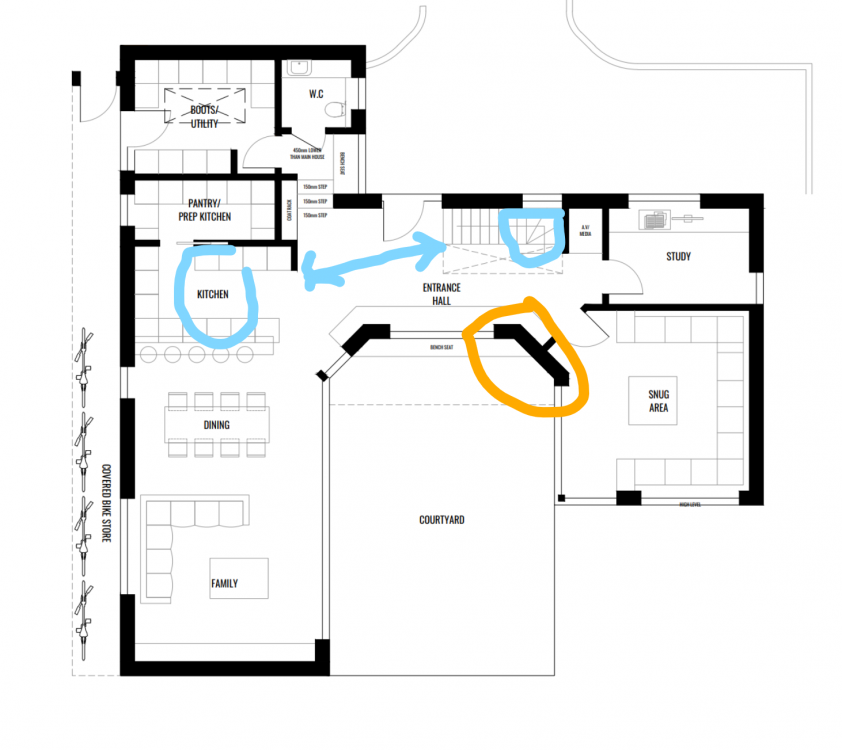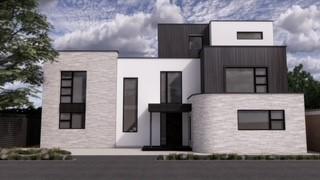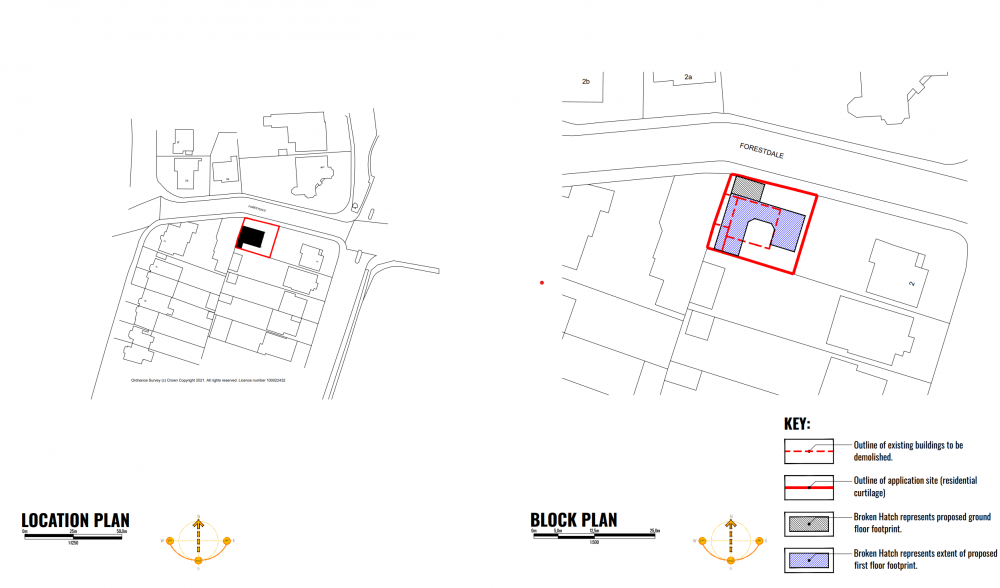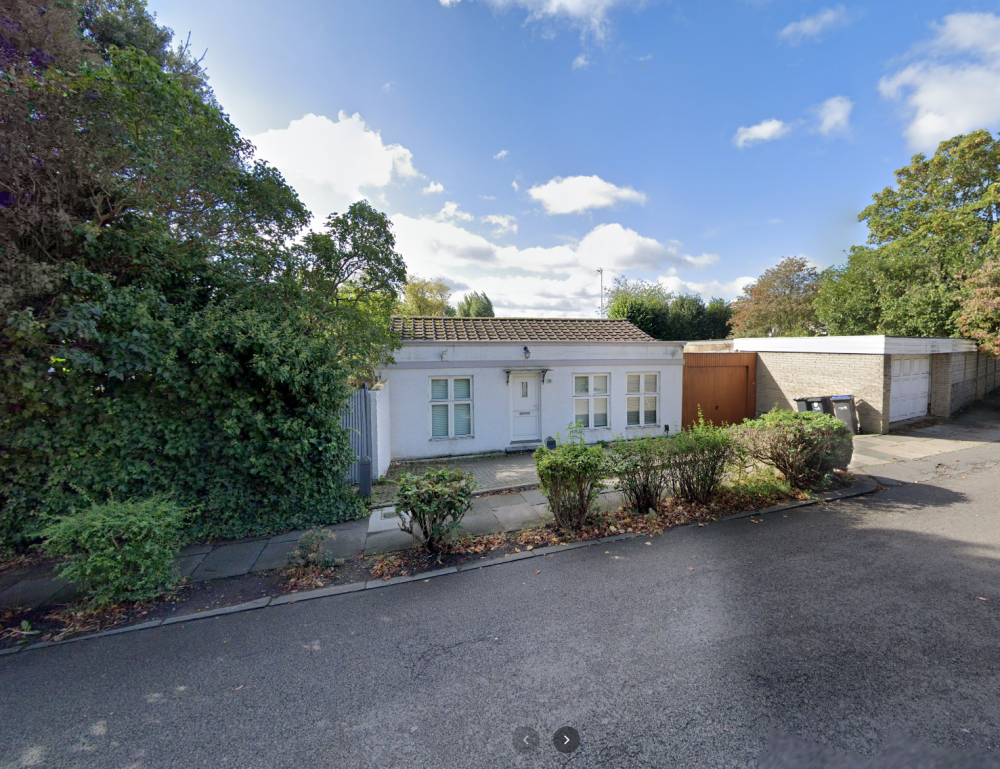
pipedream
Members-
Posts
22 -
Joined
-
Last visited
Everything posted by pipedream
-
thanks @Gus Potter for the going into the potential pitfalls, structural considerations and suggestions. Its timely at this stage and I will pick it with the designer and SE depending on the outcome of the discussion with designer. To be fair U shaped building was my idea. @saveasteading This and other pointers are very helpful. @PeterW good spot, I had a read of part M and I will be taking it with designer also to double check on other provisions around the toilet sizes ,door and entrance clearances etc. The kitchen /staircase location should be ok (I think) as the snug glazing is sliding door and also the entrance does not really go though the kitchen.
-
Thanks that is very helpful helps weighing up the decision . Thanks ,I was in two minds, now I am seriously reconsidering. Also dread to think of consequences of any cockup in detailing of the roof.
-
Surface water infiltration value ahead of PP application ??
pipedream replied to pipedream's topic in Building Regulations
thanks got hold of a sample report , very detailed indeed. https://www.molevalley.gov.uk/CausewayDocList/DocServlet?ref=MO/2016/1566&docid=653944 still missing the any idea how to deduce it perhaps? -
Thanks @ETC , I am struggling to figure out, which wall are you referring to .On ground floor all walls are 90 degrees or more. May be you mean first floor, due to the overhang, the playroom and bedroom 3 have wall angles less than 90 degrees, but they are tad bit more than 75 degrees, practically should not be a problem. Just to be sure, are you referring to the two zones in blue below ? The centre points are about 8 meters apart . I didn't realise the open plan would be a problematic .It should be fairly easy to introduce a bifold door to shut off the kitchen wing. Do you think that will help?
-
Surface water infiltration value ahead of PP application ??
pipedream replied to pipedream's topic in Building Regulations
I managed to locate one relatively quickly but a detailed drainage strategy report (££) went with it . I am searching for more. Great thanks ! .I checked the website and have a few Qs, I will PM you ,if you don't mind. -
I think so. the closest bit is 80cm to 100 cm away .Rest is good 4.5 meters away. The first two attachments on the original post gives an idea although dimensions are missing. Where i suspect we would struggle with scaffolding is the kitchen wing where the proposed structure is abutting neighbour's garden (I own the boundary fence). I see what you mean with solar panels vs green roof. I am doing more research https://www.theecoexperts.co.uk/solar-panels/green-roofs - This is more predictable argument in favour of solar panels https://www.fmlink.com/articles/the-debate-green-roofs-vs-solar-panels-part-2-of-2/ - Bit more nuanced, favouring intensive green roofs over solar panels. Mine BTW is extensive roof and a weaker contender, but some points apply. For me primarily - Its less abrasive visually than say flat GRP roof, especially for neighbours who are exposed to this from rear facing first floor and loft windows. - Helps with my suds -Virtue signalling to the planning dept, hoping it goes well with the theme that the replacement has better structure than one it is replacing.
-
I am about to apply for planning for demolition of the bungalow, we have been living in to replace with a structure with 35% larger footprint. Since April 2019 the Greater London councils have made it mandatory to include a suds proforma (attached) for all new build/extensions (with increase in footprint) applications. I can appreciate the intention, but details sought feels unreasonable at this stage. I think, I can fill the other fields and can do a percolation test if needed, but no idea how section 2a below can be filled with out paying out for drainage engineer/survey.. 2a. Infiltration Feasibility -Superficial geology classification -Bedrock geology classification -Site infiltration rate in m/s -Depth to groundwater level in m below ground level -Is infiltration feasible? Anyone else had to deal with this before ? Any other pointers will be much appreciated. enfield_suds_proforma_0 (1).xlsx
-
The designer's view on cost was that, on its own, the overhang will not cause a significant cost increase. In my mind ,I thought it will only involve two additional structural steel beams like below. The crosses are where a supporting beam could go , if the span requires it. I am all ears, if there are other cost implications, that are obvious . I did not check on the drainage, assumed that it will be downpipes on either sides, running into the surface water drain/ soak away. The flat parts are proposed to be green roofs so drainage will have to dealt with very well anyway. @Iceverge that is good point about non-mobile occupants. There is a non zero probability that parents might move in at some point. Never though of lift, as I thought it would be too expensive, but as you suggested, it will be good to see if can be provisioned should the need arise. The sung will have curtains (not ideal ), but with little kids , at this stage its good have all round visibility. With the glazing, the desired effect was for the little garden to feel part of the house. The initial shadow analysis, showed fair bit shading due to two wings blocking each other at various points of time and the overhang at he back helps. We need to look at it bit more carefully, if planning goes through. Any specific cost saving measures or other suggestions are most welcome. I like the idea of green roof, especially as the proposed structure eats into the garden, also felt the least I could do for the neighbours on that end, but I am concerned that I am setting myself for a leaking roof . Any experience, thoughts on green roofs.
-
Thanks for taking the time . @Mr Punter , I was in two minds about QS. In the end with the designer we decided, if it was not blatantly out of budget, then best to wait and we see what planning will agree to. @saveasteading good pointers. The over hanging first floor was a compromise after some deliberation. Initial view was that, first floor front wall will be inline with ground. For various reasons, the master bedroom position is fixed. Which then means, in order to have 4 decent sized rooms on first floor, the master bedroom would have to loose en-suite or dressing room (a deal breaker for better half) We then tried something like below, without as much steel involved. From a massing and aesthetic point of view the protruding first floor was clunky. The overhang also removes the need for separate rain protection for entrance door and works better to reduce visibility of the second floor.
-
Attached is the design iteration for my signoff, ahead of planning application from the architectural designer . Background - Its demolition and rebuild of a bungalow, we have been living for past 7 years. More details in my introductory post https://forum.buildhub.org.uk/topic/20015-self-build-for-a-growing-family Overall, I am really happy with what they have produced, it has been heavy guided by me. The hallways/gallery spaces could be more efficient, but I was keen on horse shoe shape because of privacy concerns from neighbours surrounding the plot. There are a few minor adjustments internally, I can think of, but it would great to get views / improvements from more experienced folk out here.
-
@Temp thanks for the suggestions, it makes sense .
-
I am having a dilemma .Would greatly appreciate, if I could seek some collective wisdom/advise. The self build is a demolition of single storied bungalow to replace ideally with a sustainable 2.5 storey house that will be my forever home. Location: The site is in outer London, just inside M25 on a road dominated by 1930's houses with large gardens. Existing: An owner occupied two-bedroom bungalow exists at the current site. It is the only single storey building on the street. The site is about 17.5m wide (road facing) and 15.5m deep. The two adjecent properties are 1930s detached houses .The three properties on the opposite side are detached but differnt from each other built at differnt times.Directly opposite is the only chalet bunglow (with two rooms in loft) on the street, which has the same ridge height as other houses 2.5 storey houses. History: The bungalow was built in 1975 followed by a change in use from dentistry on a garden plot. There are no explicit planning restrictions when permission was granted and its not a conservation area. The current owners bought and renovated the property in 2013 without altering the layout. The existing footprint is about 80 sqm on a 17M (road facing) x 15 M plot which gives me 80 +80 + 40 =200 SQM, which at a high level gives me enough for my requirements. Given the varied street scene and the poor architectural quality of the current dwelling, I was of the view that a larger mordern dwelling is possible which doesnot have to look like it was built a century back. Thankfully a new planning law allowing a fast-track process for adding storey to a single storey house is helpful https://www.legislation.gov.uk/uksi/2020/755/article/3/made Potentially it adds options on planning permission approach. For e.g. a fast track for a storey addition, followed by a full planning permission for increasing roof height with rooms in roof in line with surrounding houses for 2nd storey and a more modern façade. The other approach is normal one to just go for target state to start with, which is much simpler and in worst case use FastTrack process. The first, fastTrack approach will still go to neighbour consultation and other public body checks, but the principle of massing is established and not in question from what I understand. Once that is established, new planning application will be asking for small increase i.e 2 to 2.5 floors, versus the second approach where we are looking at significant increase in size. Other considerations are -I am living in the bungalow for last few years so a 6 month planning delay immaterial . -The new build due to its position does not look like it will affect any neighbour's light. -One of my key brief conditions is to respect privacy of neighbours and which in turn is my privacy too. -I have been told by my two of my nearest neighbours that they will object no matter what provisions are in the design for privacy. I am expecting fair few objections, but expecting planning considerations to prevail over individual preferences. -When I asked the planners back in 2013 informally about the prospects, they hinted a chalet like opposite property should be possible .I sort of worry that it might be initial mindset, i.e. due to garden plot, any property should be subservient to other houses. My gut feel is to play it safe and go for a two phased approach. It feels like the path of least resistance , but not sure if LPA will slap a restriction that makes subsequent enlargement difficult. The architect who has a lot of experience with self builds is of the view that we should go for option 2, as its simpler and achieves our goals better, which also is right in its own place. I decided against pushing for what I felt right and agreed to go with the expert, but now having second thoughts after initial design interaction was a bit underwhelming after signing and placing deposit. I have been assured it will be addressed but feel that I need more convincing on the planning approach. Attaching some topographical reports including elevations of impacted neighbouring properties if it helps. TS21-201-1 1-100@A0 (2).pdf TS21-201-2 1-50@A1 (3).pdf TS21-201-3 1-50@A1 (2).pdf TS21-201-4 1-100@A1 (2).pdf
-
Thanks @FM2015 it’s a different perspective to what I have seen so far and really useful . With internal cavity membrane , I get this image of mold in the cavity sending airborne spores everywhere . Maybe I am worried about a improbability due to past challenges with mold.
-
Thanks that’s very useful info.
-
Understood thanks , it’s too early to fix the waterproofing type without GI. Still would be good to know what are the warranty options with ICF basement, to put a tick against the research box for ICF basement warranty . Also good to know , if there are any constraints , ie warranty providers insisting on two types, but one of them must be type C, because the quality of pour is not visible .
-
@FM2015 would you please expand on this . What are the options for someone who is not keen on type C, and prefer B or a combination of A and B types of waterproofing with ICF basement.
-
Thanks @FM2015, @jack and @Bitpipe Very good points on ICF vs TF decision. It helps me. This is where I am in the decision process . The build cost is major consideration as ideally I would like a basement to give me the space needed but early indication is that it might be a stretch .Although my location in outer London does not command the dizzyingly high land prices in the centre, but for build costs/quotes, I suspect I will be lumped with London. The early foray into prefab routes were an attempt to reduce cost. I.e if the London labour costs are high, a prefab with less onside labour is likely to be cost-effective. Timber frame fits my requirements very well, plenty of resources, suppliers and reviews .Like the fact that it is designed and manufactured in quality controlled settings with plenty of supplier options and service levels. MBC's package with guaranteed airtightness and foundations stands out. I am impressed by excellent engagement from Fleming and the range of service levels.I liked Hanse Haus who provide turnkey at a premium, but a shell from them might be a sweet spot , hard to tell till I seek firm quotes. My initial uninformed impression of ICF were one similar to that of Steel framed houses at the time . They have their strong points, but not enough mainstream to easily find a reliable contractor who can deliver shell and be able to fund it using mortgage with insurance etc. Last few weeks I have been looking closer at ICF and finding it very interesting.Good airtightness is achievable without relying on good detailing. I am close to a busy road so the noise insulation is a key consideration for me. I quite like the fact that cantilevers,corner windows are simpler .I also looked at monolith.com , who provide brick slips that can be stuck directly to ICF insulation. I like the fact that the shell including basement can be undertaken by one supplier/contractor. There may be a subconscious bias/affinity towards concrete, I spent my childhood/teenage in a humid tropical country, where concrete is used a lot.My parent's roof is massive poured concrete slab. Oddly I don't think they bother with waterproof concrete, instead adjust the cement ratio in the mix, give it sufficient depth and some sort of cementitious coating on top . Never figured out why the practice of building such heavy roofs survived, but that aside concrete is good with termites,ants and other problems specific to that climate. The aspects that I am researching now are :- 1)Do ICF suppliers also erect ?Thermohouse seems to. 2)Do we have any quality assurance service from ICF suppliers, like for e.g Sikka inspects and provides warranty for their waterproofing product used. 3)On a like to like basis for shell what is ICF premium for my location. 4)IWhat is the route for obtaining ICF basement warranty without using type c waterproofing. I will be visiting a nudura ICF constuction nearby so that is something I am looking forward to.
-
Thanks Understood . Ahh I get it now . The timber frame package coverage is more complete , factory planned/ manufactured and in your case 5 odd % cheaper overall. That is a very interesting addition to my ICF vs Timber frame decision process. Much appreciated !
-
Looks like I cannot edit my post after some time .Please ignore this question above, it was bit premature. Clearer now that I have gone through some of relevant posts on basement warranty and issues surrounding it .
-
Thanks @jack. Agree it is a short coming with ICF basements. However in my mind the key component that makes the waterproofing technique viable for habitable space is the backing of an Independent warranty (like Sikka’s). I would have imagined, the ICF basement would also come with something of the sort. I am assuming if lenders and others like NHBC are involved, they would require independent third party to take the risk and its not optional. Any thoughts around the path usually taken in these circumstances when manufacturer warranty is not an option?I suspect builder’s warranty is not worth much. Thanks @Bitpipe your build timelines for a novice are impressive and is a good example to show what is possible. In my case , I just about manage very busy work and home. So I have to find an optimal build route which minimises overheads, but is practical/viable and does not require me to be onsite a lot . From my last and only experience of working with trades, often when I was absent, had to pay dearly afterwards. I will hopefully have more resources this time around to afford better quality of tradesmen, but suspect it only reduces incidents. A project manager is a consideration, but suspect I wont be able to help hovering around them trying to double check everything and would never be truly satisfied ! Your evaluation on the economics between the shell approach you took and ICF is very interesting ? Intuitively I would have thought ICF would be cheaper as its a single undertaking .It was also one of the factors that is nudging me towards ICF. Do you recollect a ballpark percentage (or £) cost difference between MBC/ground worker vs ICF route on a like to like basis ? I suspect MBC has grown more popular in last few years and ICF more mainstream so the figures might move, but still will be valuable info.
-
Thanks @ProDave and @Bitpipe @Bitpipe, we seem to have more similarities than the just display name. I came across your posts and been reading them with great interest even before I posted ,when searching for basement builds around my location . Your approach said is exactly what I had in mind ! Given the small foot print that is likely to be allowed, a basement makes a lot of sense to meet the space requirements. With the tight budget, I would be mighty pleased, if I can squeeze in an empty basement box , light well and glazing of the basement . The finishing can wait till I have more funding. Like you, the plan is to test planning without basement, then do a soil/ground survey to get an idea of the complexity of the basement build. If there are no immediate red flags, then ask planning permission for the basement addition. Thanks, I have my sights on Ecology, but feel its better to approach them after planning permission . I might be hitting a high mortgage LTV , a good approved design might work favourably for valuation. If I am not building a basement, timber frame seems to be good option. But with a basement the ICF throughout looks more straight forward. Any leaks with ICF basement will be tricker to deal with than with formwork, but get the feeling that the ICF basements are evolved enough, where that risk need not be a deciding factor. If I can find a ICF supplier/builder who can build the shell and install windows (supplied by me),it will be great.I am likely to have a lot of glazing and slightly worried that dimensional stability/accuracy of ICF seem to be down to bracing ,which in turn is depends on the quality of builder. https://thermohouse.co.uk/ seem promising as the impression I get is that they can provide all elements of a shell and labour (except glazing and groundworks), I have to contact and find out more. May I ask , if you considered ICF and why you chose formwork basement and timber frame ? Was it more to do with your preference for the method or due to the fact MBC was more convenient/reliable in getting a shell erected?
-
Hello Everyone, Just wanted to say hello and If I may add, I am amazed by the collective body of knowledge here and generosity of members who have contributed time to build the knowledge base. A quick background on our self build, I relocated to London about 15 years back when my job moved from the continent. After few years, when we were expecting our first child, a run down probate bungalow came to the market around where I was renting , just inside M25. It is about 80m2, built in 1970s on a small garden plot 17X15 M. It was the only housing option with a garden I could afford at the time.It was followed by manic 4 months to make the place habitable, replacing electrics,flooring,kitchen,plumbing, polycarbonate windows etc in a dire state on shoe string budget .At the end of it, I was pretty sure that I would not ever get involved in a property needing work Fast forward to 2020, we need more space for growing family. The choice is between upgrading for something more suitable or building (planning permitting).Building is likely to end up more expensive but will meet our longer term requirements which might include parents moving at some point. The main sticking point for build is that self build mortgage borrowing limits seem to be lower than regular ones and SWMBO's has doubt on me pulling it off. Working from home with two kids helped with the procrastination and we are in the process of applying for planning. The new Boris law making it easy to add a storey will help, but I want a habitable loft so it will be full planning applications with some objections etc. Attaching an Ariel map, thank fully the properties are on south and east and not too close (the adjacent structure is rather large garage/entertainment area of the neighbour on that end. In the beginning I was leaning towards timber frame/MBC route, but increasingly finding the ICF route quite interesting. A lot more research and homework to do and this forum is invaluable.




